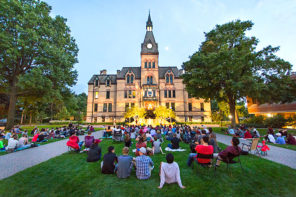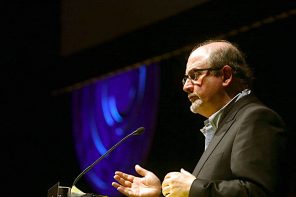Nearly every day there are reports of fresh horrors in Sudan, typically involving attacks by the Sudan Armed Forces (SAF) against groups out of favor with the Khartoum-based regime, the dire situation of refugees, or both. There is so much, and so often, that it can appear from a distance as a blur of horror; a symptom of what Eric Reeves of Smith College calls “Sudan fatigue.”
But out of the fog of war sometimes comes the stuff of which brighter futures are made.
Last August, leaders of what would become the Sudan Revolutionary Front, a military and political alliance of groups persecuted by the Khartoum regime, issued a declaration of independence. It was at once a call to arms and a visionary statement that closely echoes America’s founding documents regarding the role of religion in public life and the rights of individual conscience. Thomas Jefferson, James Madison, and their fellow founders would undoubtedly be very pleased. They also might, like many contemporary Americans, be surprised to learn that the John Hancocks of the Political Declaration of the Sudan Revolutionary Front are also Muslims.
The Horror
Many of those out of favor with the government in the provinces of South Kordofan and Blue Nile have faced ongoing campaigns of ethnic cleansing that have shocked the world. Details include government-backed death squads; body bags stuffed with corpses, loaded onto trucks, and dumped in mass graves; civilians chased by attack helicopters; and refugees starving in the mountains and bombed in refugee camps. This is the modus operandi of President Omar al-Bashir and top leaders of his government, who have already been indicted by the International Criminal Court for war crimes and crimes against humanity in Darfur.
Unsurprisingly, persecuted groups from these areas have joined forces with those in Darfur to fight back. They have had some military successes, even though they seem to be outgunned.
But the SAF is now poised to attack Kauda, the last city with a concentration of the religiously diverse, Black-African Nuba minority. The outlook is grim. Satellite Sentinel Project (a human rights organization) has documented via satellite the forward deployment of helicopters, Antonov bombers, troop encampments, and the recent construction of elevated roads to ease military movements during the rainy season.
The SAF has blocked the route by which civilians would flee the military advance on Kauda. The White House has publicly worried about an approaching famine that could impact a half million people, vastly exacerbating the existing humanitarian crisis. At this writing, the Khartoum regime continues to bar reporters and even most international humanitarian aid groups from entering the country. Human rights groups have called on the international community to mount a dramatic cross-border, emergency humanitarian aid operation; though there is no indication at this point that anyone will heed the call.
Observers believe that the battle of Kauda will begin before the rainy season in April.
The Declaration
In 2005, a peace agreement appeared to have ended two decades of civil war in which some two million people died. The agreement provided that a vote take place to determine whether the southern part of the country would be allowed to peacefully secede. But before and since the vote to secede president Bashir has remained clear about his vision of Islamic nationalism as the future of the north, as violence continues to escalate. “If south Sudan secedes,” he promised prior to last year’s vote, “we will change the Constitution, and at that time there will be no time to speak of diversity of culture and ethnicity… sharia and Islam will be the main source for the Constitution, Islam the official religion and Arabic the official language.”
Such statements have provided opportunities for those seeking to impose a Manichaean narrative on the conflict of Muslim persecution of Christians. But even as Khartoum does in fact target Christians, the broad struggle is more accurately seen as one between rising state-sponsored Arabist Islamic nationalism, against racial and religious pluralism. Episcopal Bishop Andudu Adam Elnail of South Kordofan testified to Congress last year, that Khartoum’s ethnic cleansing campaign has not singled out Christians so much as anyone who happens to stand in their way, and he cited the compelling example of an SAF rocket attack on a mosque in Kauda.
Omer Ismail, a Sudanese activist from Darfur who participated in the drafting of the Declaration provided RD with a rare glimpse into the process of formulating a vision for a new society. He said that the document was the creation of scholars and activists in Sudan and the Sudanese diaspora. It was created largely over email, before being put into final form by a core group.
The John Hancocks on the document are leaders of factions of the Sudanese Liberation Army (SLA) and the Sudanese People’s Liberation Movement, North (SPLM-N). Asked why more of the authors’ names aren’t on the Declaration, Ismail explained that the larger group did not want it to be about them but about the vision itself.
The Darfur-based Justice and Equality Movement (JEM) was set to sign onto the Declaration at the time, but withdrew because, as Ismail told RD, some elements of JEM “were not ready to abandon a role for Islam in public life.”
The Political Declaration of the Alliance of Sudanese Revolutionary Front, announced in August 2011, indicates that they intended to draft a Constitution that would guarantee citizens the rights of freedom of expression, association, assembly, belief, and thought, to “ensure all are equal before the law,” and to embrace “cultural, ethnic and religious diversity.”
These goals are to be carried out in accordance with three broad features of governance: First, there would be three co-equal branches of government—a legislature, executive, and judiciary; then the new Constitution would proscribe “discrimination on the basis of religion, race, culture, or gender,” and “protect the religious, intellectual, and cultural freedoms and ensure peaceful expressions of them.” Finally, the Constitution and laws would be based on the Jeffersonian ideal of “the separation between religious institutions and state institutions to ensure no exploitation of religion in politics.”
Ismail, currently a Senior Policy Adviser to the Enough Project, an anti-genocide group launched as a project of the Center for American Progress in Washington DC, confirms published reports that the Declaration was put on the back burner in November in order to accommodate Islamic factions in JEM, and perhaps other groups the SRF would need to engage in order to topple the Khartoum regime. So while the Kauda Declaration, which announced the more formidable military alliance (which now included JEM) made world news in November, it made no mention of the political visions of August. “The military guys want to minimize our differences,” Ismail said, “and get on with the military activities.”
The coalition politics of a revolution can be tricky. Eric Reeves told RD: “Of the SRF, I would say, very briefly, that it brings together such diverse actors, including the Islamist elements within JEM, that I wonder how long any statement of principles would govern discussions in a new political order.”
Ismail acknowledges the challenge of reconciling religious identity with the demands of religious freedom in a religiously plural society. “It will take courage,” he says, “to say to the people, as Christians or as Muslims, ‘I am going to advocate for a secular Constitution, and that this is what I want to see in the founding documents.’”
He also adds that racial differences loom large over the nation and may take “decades” to resolve. The Arab Islamic nationalists in Khartoum are historically at odds with the Black Africans, including African Muslims. Ismail says that this history can be overcome so that one day everyone “can identify as Sudanese.”
The authors of the Political Declaration do, however, want to continue the discussion. “We have not yet created the tools of making it operational, and to make it the rallying point,” notes Ismail. “But everyone agrees: It is the Bible for where we want to go.”




